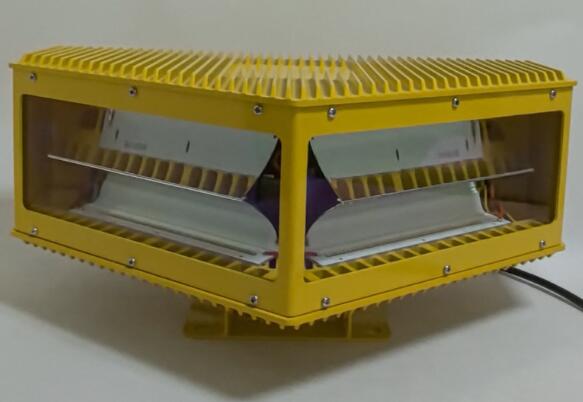Posted: 2025-04-29
In our increasingly vertical world, aviation light for building installations has become an essential element of urban airspace management. These specialized lighting systems serve as silent sentinels, protecting both aircraft and structures by marking potential aerial obstacles. From sleek skyscrapers to remote wind turbines, aviation light for building applications has evolved into a sophisticated science that balances safety, technology, and environmental considerations.
The Science of Building-Mounted Aviation Lighting
Modern aviation light for building systems incorporates advanced optical engineering:
Precision wavelength control (618-620nm for red, 500-520nm for white strobes)
Computer-optimized flash patterns (40 flashes/minute for medium intensity)

Adaptive luminosity (20-200,000 candela based on structure height)
Glare reduction technology using specialized Fresnel lenses
Regulatory Framework Worldwide
Global standards govern aviation light for building installations:
ICAO Annex 14: Establishes international requirements for obstacle lighting
FAA AC 70/7460-1L: Details US specifications for structure lighting
CAA CAP 168: UK standards for building-mounted aviation lights
IEC 61820: Electrical safety standards for aviation lighting systems
| aviation lights for building |
Technical Specifications by Structure Type
Different buildings require tailored aviation light solutions:
High-Rise Buildings
Dual lighting systems (red steady + white strobe)
Multiple elevation lighting for structures >150m
| aviation light for building |
Roof-mounted high-intensity systems
Telecommunication Towers
Medium-intensity red lights (L-864)
FAA Type L-865 white strobes for daytime
Multiple level lighting for lattice towers
Wind Farms
FAA Type L-864/L-865 combinations
Aircraft Detection Lighting Systems (ADLS)
Synchronized flash patterns across turbines
Bridges and Suspended Structures
Special clearance lighting for suspension cables
Under-deck lighting for navigable waterways
Custom angular coverage solutions
Innovations in Building Aviation Lighting
Recent technological advancements include:
Solar-powered LED systems with 5-year battery backup
Radar-activated lighting that only illuminates when aircraft approach
Self-monitoring networks with automatic fault reporting
Low-profile designs that preserve architectural aesthetics
Ice-resistant housings for extreme climates
Installation Best Practices
Proper aviation light for building implementation requires:
Obstacle analysis using 3D modeling software
Light spacing calculations based on structure geometry
Photometric studies to ensure coverage compliance
Glare control planning for nearby communities
Redundant power systems for uninterrupted operation
Maintenance Protocols
Critical upkeep procedures include:
Quarterly photometric verification
Annual lens cleaning and inspection
Bi-annual electrical system testing
Instant replacement of failed units
Continuous monitoring via Building Management Systems
Environmental Considerations
Modern solutions address ecological concerns:
Dark Sky-compliant designs that minimize light pollution
Wildlife-friendly spectra that don't disrupt migration
Energy-efficient LED technology reducing carbon footprint
Minimal spill light configurations
Automated dimming during daylight hours
Future Trends in Building Aviation Lighting
Emerging technologies include:
Li-Fi enabled lights for building-to-aircraft communication
Holographic markers for enhanced visibility
Drone-detection enabled systems
Self-cleaning optical surfaces
AI-powered predictive maintenance
Case Studies in Effective Implementation
Notable global examples include:
The Burj Khalifa's multi-level synchronized system
London's Shard building's low-impact lighting design
Offshore wind farm lighting in the North Sea
Golden Gate Bridge's specialized aviation lighting
Aviation light for building systems represents a perfect marriage of safety engineering and urban design. As cities grow taller and airspace becomes more crowded, these lighting solutions will play an increasingly vital role in global aviation safety. The future promises smarter, more efficient systems that continue to protect lives while respecting environmental concerns and architectural integrity. In our vertical age, proper building lighting isn't just a regulatory requirement - it's a critical component of responsible urban development.